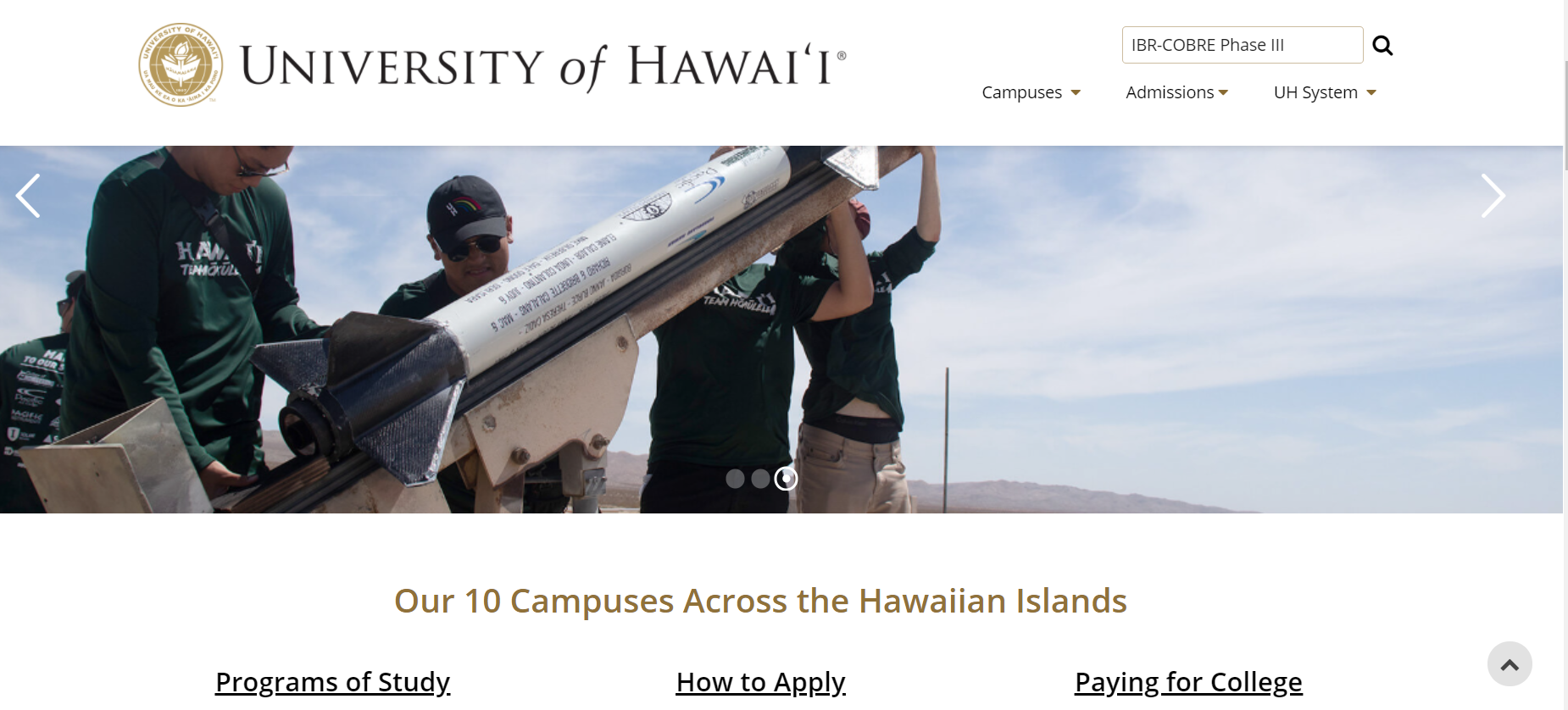Overall Component Approximately 70,000 babies born in the U.S. in 2015 were conceived by artificial reproductive technologies (ART), which involves one of two techniques: in vitro fertilization (IVF) in which the sperm fertilizes the egg in vitro, or intracytoplasmic sperm injection (ICSI) in which the sperm is injected into the egg using micromanipulation. The rapid rise in ART world wide, and continued developments of the procedures employed by ART clinics, requires that research keeps pace to ensure the safety of ART and to improve reproductive health. Starting with just three faculty in 2000, with COBRE support starting in 2008, the IBR has grown to 14 full-time faculty in four departments, within the John A. Burns School of Medicine (JABSOM), of the University of Hawaii at Manoa (UHM). Of these 14, the COBRE Phases I and II supported 10, and all but two have obtained independent NIH R-series funding. The direct result of COBRE funding is that the IBR has emerged as an internationally recognized center of research excellence for reproductive biology and one of the best centers in the world for mouse gamete manipulation (ICSI and IVF). During Phase I, the IBR recruited five new faculty, establishing it as a reproductive biology research institute and attracting several national and international trainees. During Phase II, the Phase I project leaders became mentors and core directors while maintaining their own labs. Five additional faculty were recruited, bringing expertise in epigenetics, bioinformatics, gene editing and organ development, and we also established a close partnership with the Department of Obstetrics, Gynecology and Women’s Health (Ob/Gyn). After ten years of support, the center is now competitive for several grant opportunities that we will pursue in Phase III. Phase III COBRE objective is to sustain the IBR COBRE as a world-class basic and translational science center of excellence in reproductive biology. This will be accomplished through two Specific Aims. Specific Aim 1: Expand and diversify the expertise of the COBRE research cores. Growing and diversifying the core user base, enhancing and streamlining core operations, and strengthening the core revenue streams will result in the sustainability of the cores and accelerate the pace of scientific discovery, heighten research productivity and increase competitiveness for extramural funding. Specific Aim 2: Develop and implement a Translational Pilot Project Program. We will leverage a strong partnership with the Dept. of Ob/Gyn to develop a new translational arm of research for the IBR. At the end of the Phase III COBRE, we envision that each of the cores will be fully or largely self-sustained, through a coordinated plan of recharge accounts, extramural grants, strategic investments and philanthropy, and that a the IBR will have successfully completed development of translational research arm through a novel implementation of the pilot projects program.
Overall Component This grant will be used to support a Center of Biomedical Research Excellence that focuses on understanding reproductive biology. Human reproduction is facing increasing challenges both from overpopulation in some areas and a decline in fertility in more developed nations. Our center is a leader in the basic understanding of reprodution.

